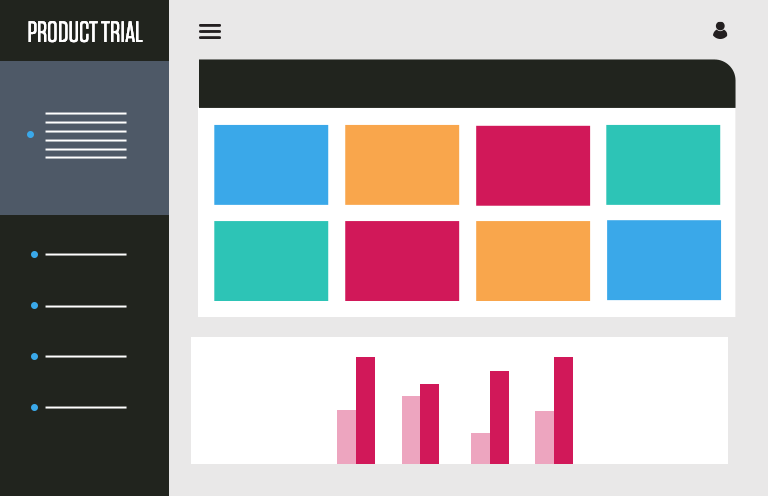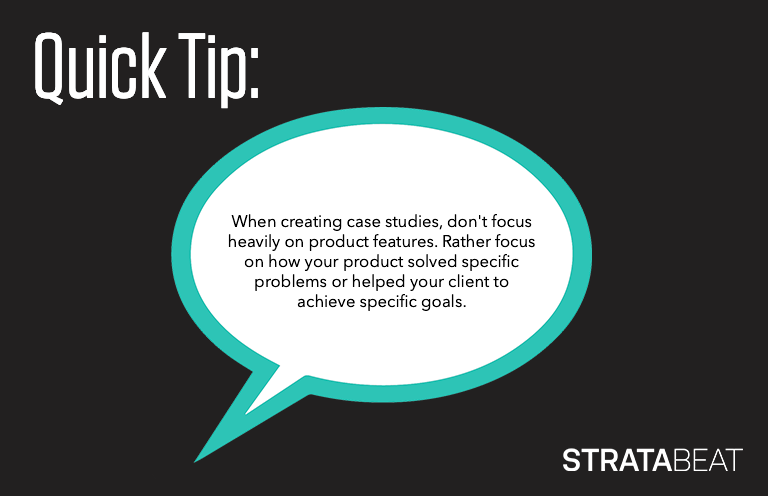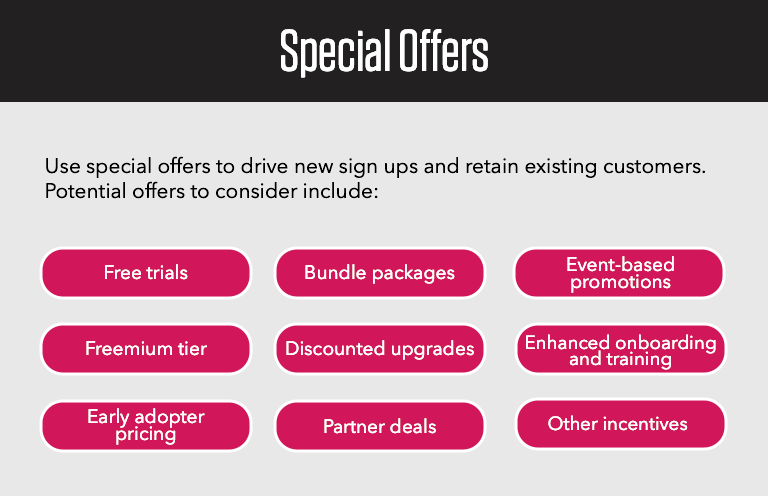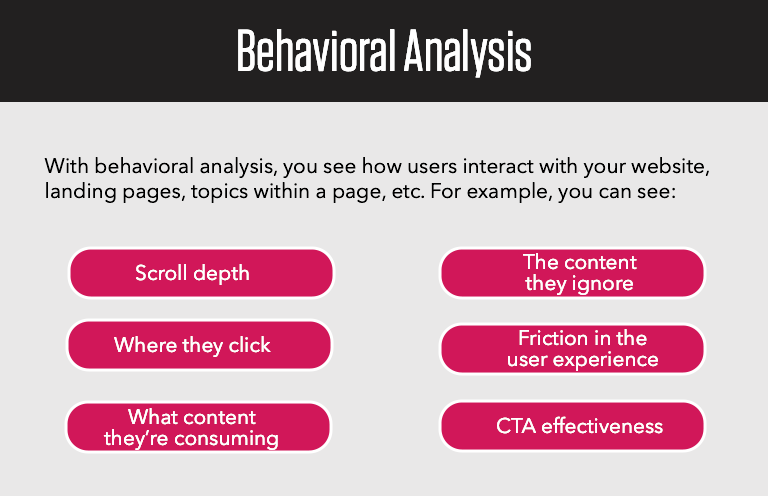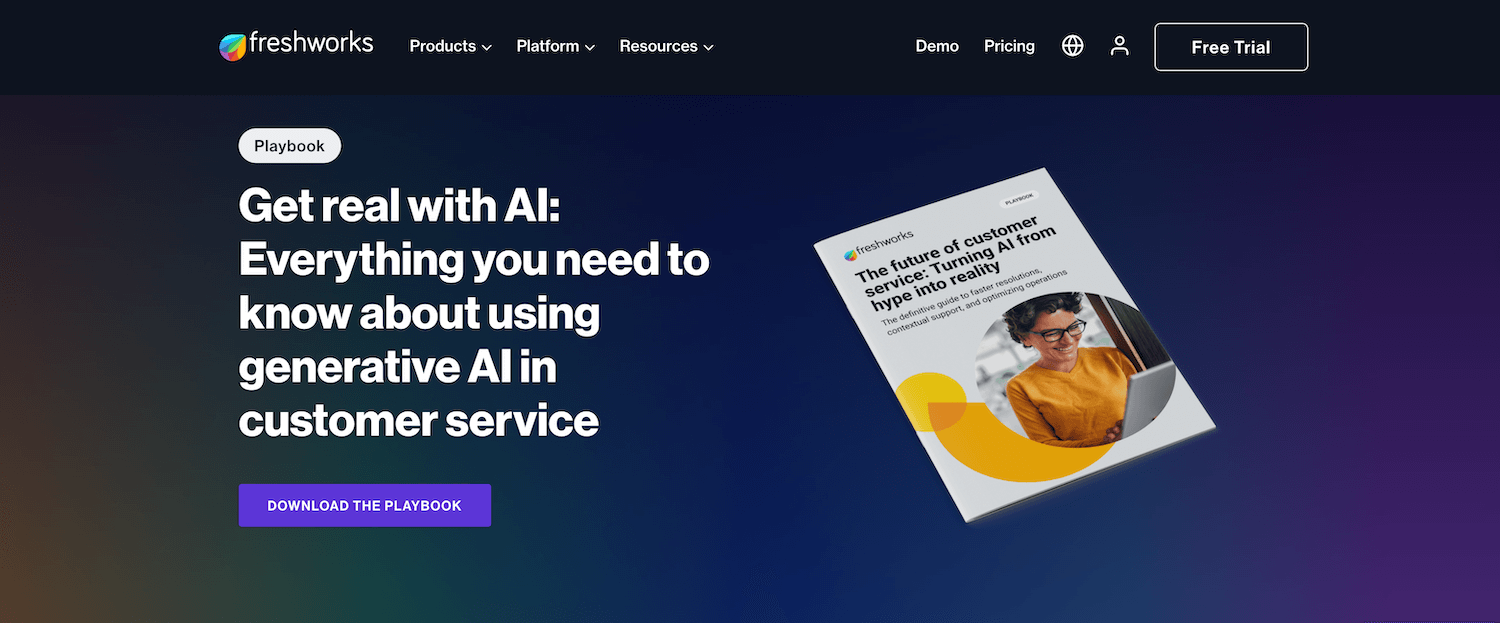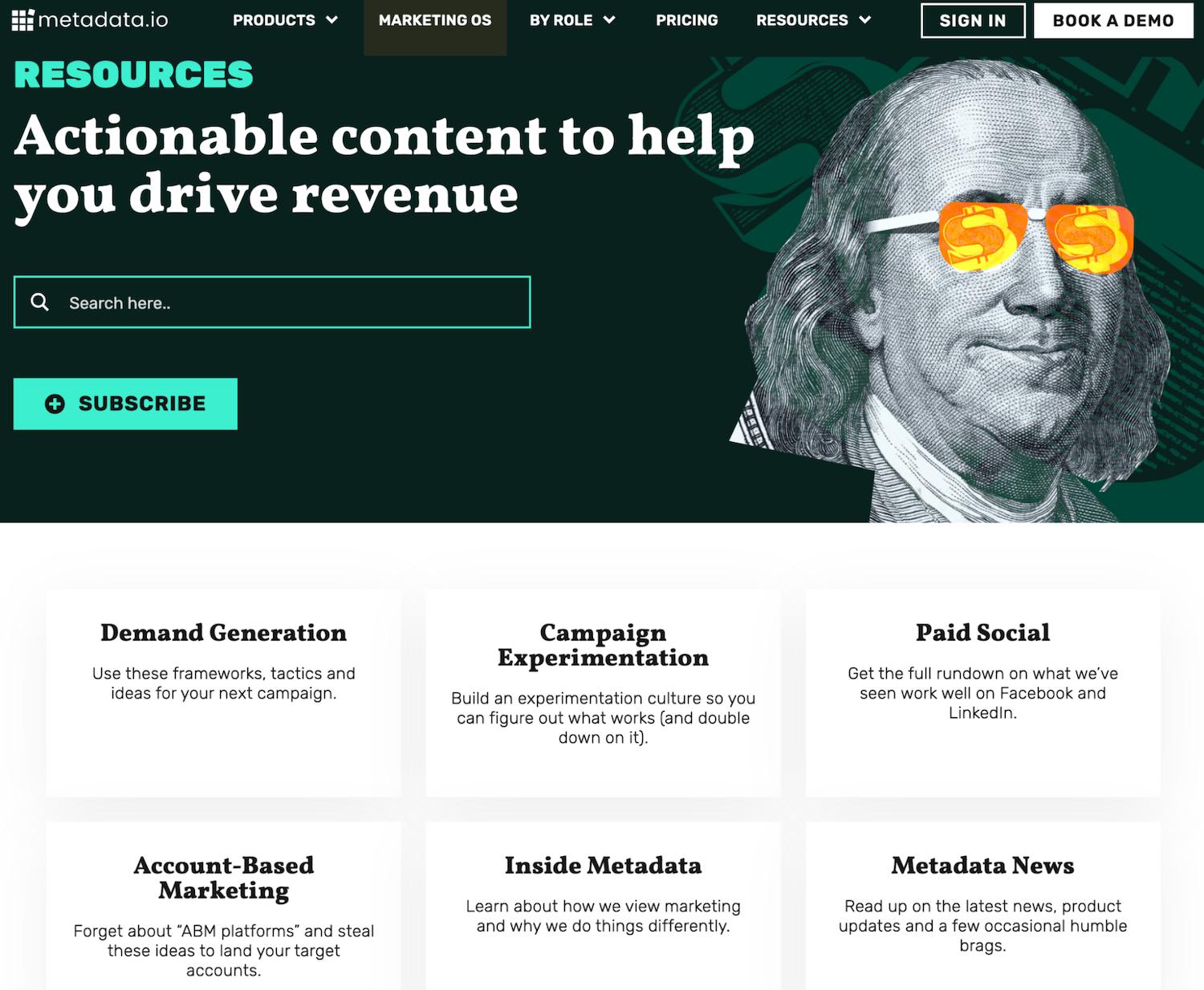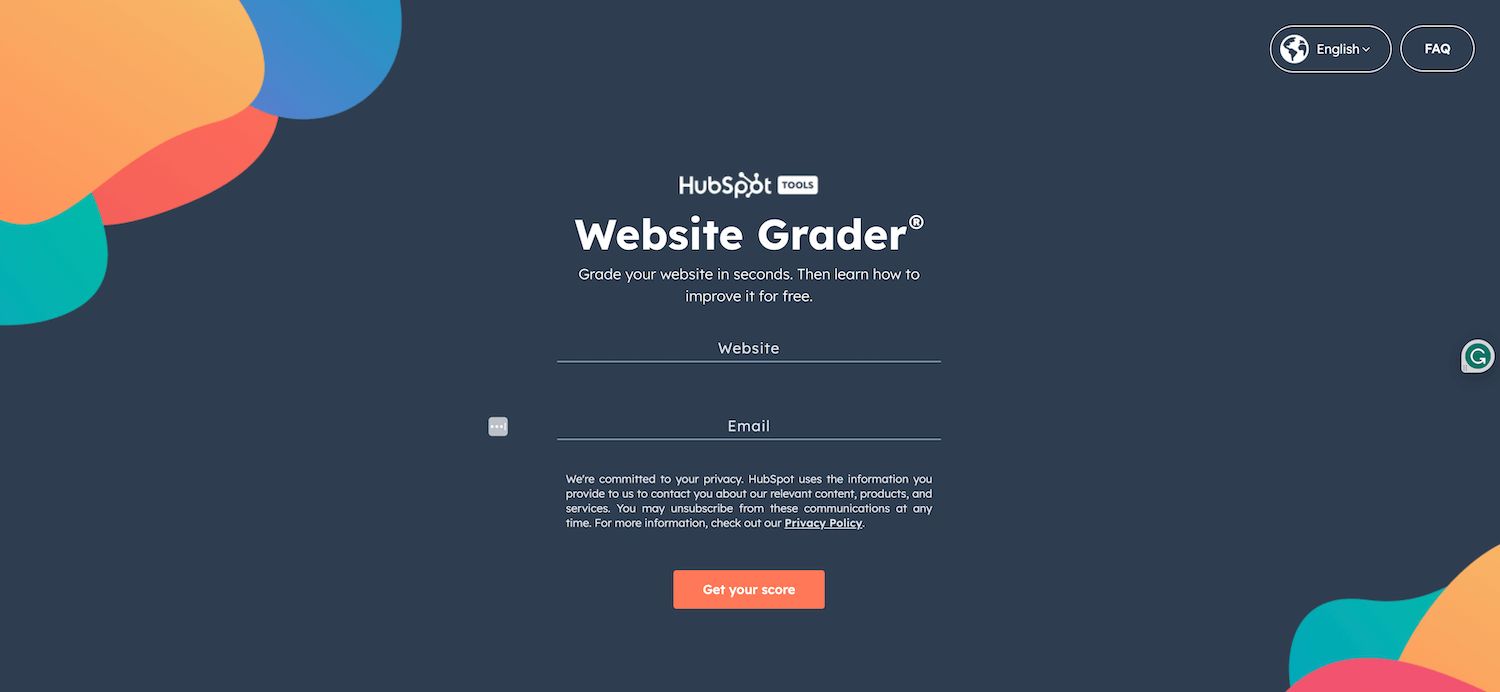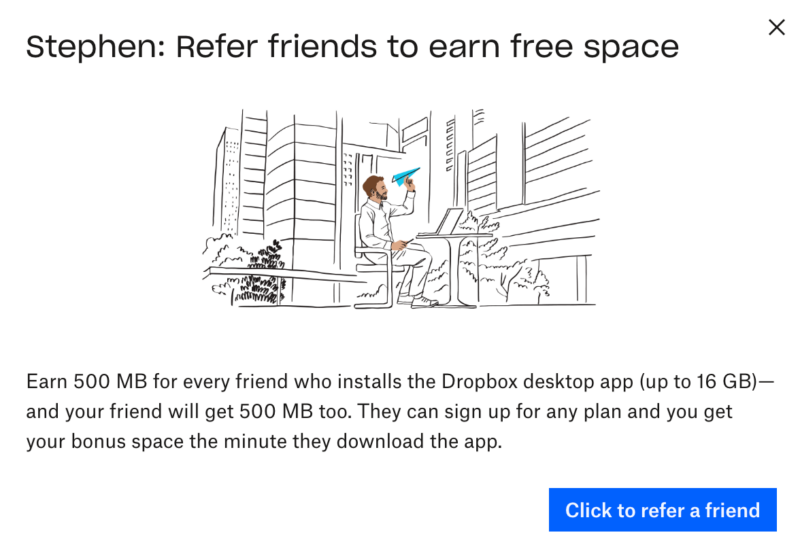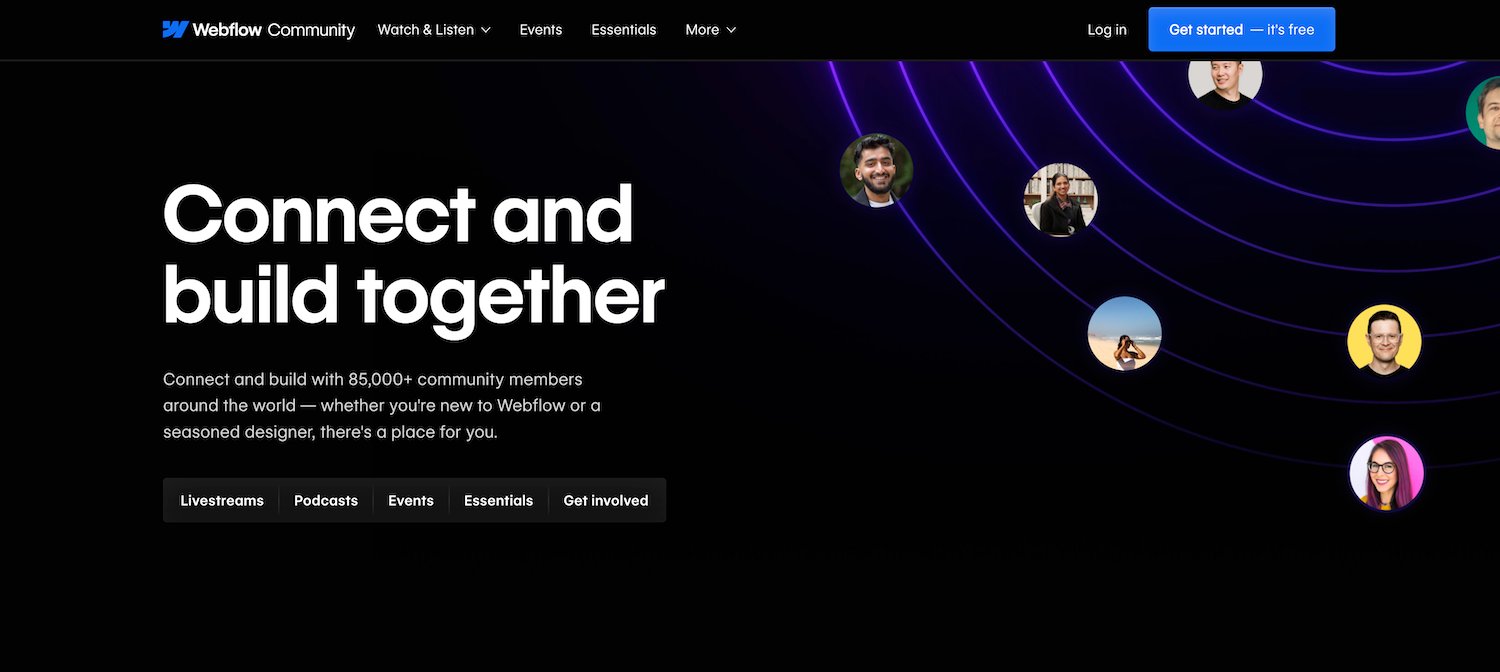23 B2B SaaS Marketing Strategies To Grow Your Brand (+ Examples)
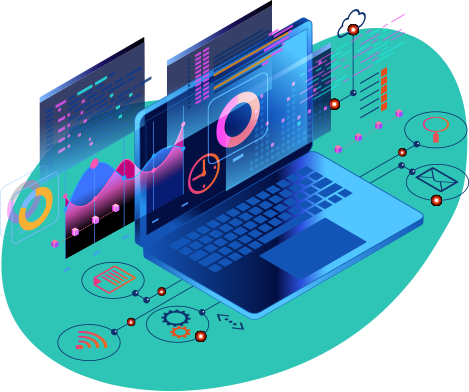
Key Takeaways
- Understand your audience deeply by identifying their goals, pain points, and buying triggers. Voice of Customer (VoC) insights are essential for creating effective, resonant messaging.
- Creativity is your competitive moat. Unlike technology, which can be replicated, creativity drives differentiation and long-term brand advantage.
- SEO is the foundation for scalable, cost-effective growth. It compounds over time and delivers high-quality, high-intent traffic that reduces Customer Acquisition Cost (CAC).
- Content marketing powers every stage of the funnel. From educational blogs to case studies and webinars, strategic content builds authority, nurtures leads, and converts prospective customers
- Move users from trial to adoption by focusing on onboarding, user outcomes, and value realization through personalized experiences.
- Referral and review marketing turn customers into growth engines. Programs that reward advocacy and positive SaaS reviews on platforms like G2 and Capterra increase trust and conversions.
- Demos, free tools, and interactive experiences provide prospects with hands-on exposure to your product’s value and significantly boost conversion rates.
- A holistic funnel approach—from acquisition to retention—fuels long-term success. CRO, behavioral analytics, retargeting, and community-building are key to reducing churn and increasing lifetime value.
B2B SaaS marketing is more challenging today than at any time in the past.
Why? Because the market is oversaturated with solutions and the competition is fierce…and constantly getting fiercer.
As of 2022, there were approximately 17,000 Software-as-a-Service companies in the U.S. alone. Early-stage SaaS companies received around $86 billion while breakout stage SaaS companies received a whopping $193 billion in VC investment in 2022. The level of competition is expected to only intensify in the years to come.
To be successful at B2B SaaS marketing requires a well-defined strategy, along with creativity, ingenuity, boldness, data-centricity, and a willingness to experiment.
Without the right B2B marketing strategies in place, your brand will likely stagnate. And you’ll likely find yourself losing ground to the competition.
However, with the right SaaS marketing strategies, you’ll attract more traffic, generate more leads, and take your brand to new heights.
In this guide we’ll walk you through 23 SaaS marketing strategies you can use to drive B2B business growth. We’ll also showcase B2B SaaS brands that are marketing effectively and capturing greater market share, revealing potential marketing tactics and opportunities for your own company.
Let’s dive in.
23 B2B SaaS Marketing Strategies
Stratabeat Fueled 5X Growth for a B2B Property Management SaaS within Two Years
See How!5. Product Trials
A staple of SaaS marketing, product trials allow potential customers to test out your product for a time before deciding whether they want to purchase from you. Because SaaS products are intangible, free trials go a long way in helping prospects get a better feel for your product and make a more informed decision.
This is why 78% of SaaS companies offer potential customers free plans or trial periods.
Product trials allow customers to interact and experience the full range of features your product offers before making a purchasing decision. They also offer you the opportunity to wow potential customers with the value you provide, helping them decide to become paying customers.
Product trials also help establish trust with potential customers. If they’re able to try your product and see the value it provides, they’ll be more likely to trust your brand.
6. Activation
Acquiring leads is critical to a SaaS business, but just as important is user activation. To that point, a 25% increase in user activation delivers a 34% increase in MRR over the course of a year.
If you think your job is done at the free trial stage, you’re leaving a great deal of money on the table. Your audience doesn’t check out your product because they want to check out your product. They instead are looking for outcomes that save them money or help them to drive growth. They want to know how your software is going to help them achieve greater business success.
Taking your users from a free trial to a paid subscription is mission critical. To identify your user activation point, define the user activation events that align with the jobs to be done (JTBD). To boost activation rates, create personalized in-app onboarding experiences and proactively engage your new users. The bottom line is that you should put just as much effort into activation as acquisition.
7. Referral Marketing
Referral marketing is an effective B2B SaaS marketing strategy for driving growth, acquiring new users with incentives, and reducing customer acquisition costs.
It’s also a way to reward existing users. By incentivizing users to refer friends and colleagues to your business, you can quickly and more efficiently expand your user base and reach new prospects.
For example, you could offer access to more features or more robust professional services for each referral someone sends your way. Or you could offer a free month for each referral, etc. The key to success with referral marketing is ensuring that the reward you offer for referrals is sufficiently valuable.
Referral marketing also helps you to build trust with your prospects, as they enter into your sales conversations with a certain level of trust from the start. After all, people are more likely to trust a recommendation from a friend than any advertising campaign. This accelerates the sales cycle, increases win rates, and makes retention easier.
Looking at it even more holistically, referral marketing is a way to turn satisfied customers into brand advocates. Advocates not only refer your product but often also provide positive testimonials, participate in case studies, and contribute to other marketing efforts, further strengthening your brand’s reputation.
8. Paid Media (PPC and Display Advertising)
Paid media such as Google ads can be a useful part of your SaaS marketing mix. PPC (pay-per-click) advertising is an effective SaaS digital marketing strategy for quickly driving targeted traffic to your website. This strategy is particularly beneficial when you are introducing something new (e.g., new product launch, new campaign, etc.) that you want to make your audience aware of.
One advantage of PPC advertising is that you can target highly specific audiences, ensuring that you get your message in front of the right people at the right time.
Complementary to PPC campaigns is display advertising. This type of advertising can help you to expand reach at the top of the B2B marketing funnel, often through a DSP. Or, you can cut an ad deal with the specific websites that your audience visits.
The downside to advertising is that the traffic and leads stop when you stop paying for it. In light of this, it makes the most sense to implement long-term B2B marketing strategies like SEO and content marketing alongside any advertising campaigns. In this way, you can reduce your reliance on paid media, and in turn, slash your advertising costs, over time.
9. Free Tools
Although developing free tools requires time and resources, it can be an invaluable SaaS marketing strategy. By providing a free tool that is helpful to your target audience, you can establish yourself as an authority in the field and build trust with potential customers. You demonstrate the type of value your brand offers.
After all, if you offer significant value for free, how much more value do your paid features bring?
Free tools can also give your SEO efforts a significant boost. They tend to attract significant numbers of backlinks, which signals to Google that your site is valuable and should be ranked higher in the search results. Backlinks also suggest to Google that your brand is trustworthy, which can also translate into higher search rankings.
Offering free tools also helps with your lead-generation efforts. By requiring contact information to use the tools, you build a list of poential prospects for your products.
10. Case Studies
Case studies are a highly effective Bottom of the Funnel (BOFU) B2B SaaS marketing strategy. They provide concrete evidence of the value your products offer.
They prove that you help your customers overcome their problems and reach their goals. They are a valuable form of social proof that reduce customer objections and give you an edge over the competition.
Just how impactful are case studies? Fifty-two percent (52%) of B2B buyers surveyed said that case studies are “very important” when evaluating different vendors.
Wherever possible, include relevant data, statistics, and quantifiable results to back up your claims for added pursuasiveness.
11. Demos
Demos are another invaluable B2B SaaS marketing strategy, particularly for BOFU prospects. At some point, prospects need to see your product in action. They need to see all that it can do and specific ways it can solve their problems, leading to a demo request.
And, unlike free trials, which require the user to figure out how to use your product, demos allow you to show your product in the best possible light with full control.
Demos are a powerful sales tool, as they allow prospects to visualize how your product would fit into their workflow and create value. They also enable you to answer any immediate objections the prospect may have. This is especially important for internal buy in. Prospects can share your demo with their team to convey the product’s value without having to get on another call.
Natalie Marcotullio, Head of Growth and Operations at Navattic, stated “My top tip for a successful demo is to keep them as short as possible (about 30 seconds to a minute) and value-focused instead of a step-by-step walkthrough. They can be highly customized bite-sized walkthroughs of specific features or use cases that your prospects expressed interest in. Demos can also help enable champions to share your product internally, without needing to jump on a new live demo every time a new stakeholder is brought in.”
[Demos] can be highly customized bite-sized walkthroughs of specific features or use cases that your prospects expressed interest in.
Demos also increase your conversion rates. According to Navattic, only about 2% of website visitors schedule a demo and roughly 4%-6% enter into a free trial. Navattic’s customer data has shown that about 25%-40% of website visitors will engage with an interactive demo, with the majority of those achieving a 40%-100% completion rate.
When planning a demo, keep it focused and concise. Highlight your most valuable features and make sure the prospect understands how your product solves their specific problems.
Along with live demos, consider adding interactive demos on your website. With demo software such as Navattic, Walnut, and Storylane, enable them to get their hands on your software faster and easier. Get them excited even before they talk with your sales team, accelerating the sales process.
This is especially important for target audiences that have a hard time trusting a new brand. Security professionals are particularly weary of new software. It’s your job (and the demos) to make your value and trustworthiness clear.
Charles Gold, CMO at ThreatConnect, states, “You won’t find an audience more skeptical than the security practitioner or security leader who came up as a practitioner. They want minimal hype and maximum information when they visit your website. Give them detailed videos that show, don’t tell, your value. Use interactive product tours, like Navatic, to let them see your product and imagine how they’d use it. Security professionals buy, they’re not sold. It’s our job as marketers to help them buy.”
Give them detailed videos that show, don’t tell, your value.
12. SaaS Review Sites
SaaS review sites help you to get in front of your target market and establish your credibility. They enable prospects to see what other customers have said about your product, and help you to monitor customer feedback.
Positive reviews and ratings on reputable review websites enhance trust in your products. Potential customers are more likely to trust the opinions of their peers, and positive reviews act as social proof of your product’s effectiveness.
Individuals browsing these review platforms are often in the consideration or decision-making stage of their SaaS purchasing journey. Your active involvement in these sites therefore helps you to attract qualified leads.
Some of the most popular SaaS review sites include G2, Capterra, GetApp, Software Advice, and TrustRadius. You should create profiles for each one and frequently monitor them to ensure that all information is up to date.
If possible, respond to reviews, including the negative ones. This shows potential customers that you care about your customers and want to do everything possible to provide them with an outstanding experience.
If you acquire a large number of positive reviews, show that off in your website, as social proof is a powerful conversion enhancer.
13. Social Media
Social media marketing should be an integral part of your B2B SaaS marketing strategy. Given the billions of users, you can be sure your audience is using it.
Post regularly on the social media platforms your target audience uses. Don’t spread yourself too thin by trying to be on every platform. Rather, prioritize and focus on your audience’s top one, two, or three platforms.
Value really is the key to success with social media. Don’t post just for the sake of posting. Give them tips, strategies, insights, and useful information that keeps them coming back again and again. Engage with your audience and answer their questions. Provide them with unique perspectives.
Don’t focus primarily on promoting your product on LinkedIn or Facebook. Yes, you can do that from time to time when appropriate, but your main focus should be on consistently delivering value.
Also, be sure to create an employee advocacy team. Feed the team with creative assets and empower them to effectively promote your brand on social media. Social posts from individuals tend to generate far more reach and engagement than corporate accounts. With this in mind, if you have 50 or 100 employees in your advocacy program, you’re improving your social media impact significantly.
14. Marketing Automation and Email Marketing
Though it’s been around for 30+ years, email marketing is still a powerful marketing strategy. It allows you to connect with a large audience in a 1-to-1 manner and capture people’s attention in a way that’s not possible with social media. As Litmus notes, for every dollar spent on email marketing, businesses average an ROI of $36.
Email marketing is great for nurturing leads and informing people about new products, features, and offers. It also allows you to onboard new customers effectively, which helps you to reduce your churn rate. Email marketing tools like ActiveCampaign and Mailchimp allow you to set up automations that will send out emails automatically based on predefined rules.
Segmentation is especially important when it comes to email marketing. Segmenting your email subscribers allows you to target audiences with specific, custom messages, helping you to increase conversions.
Email marketing is also great for boosting customer loyalty. Regularly send emails to your database to ensure that you stay top of mind. Highlight new features, offer special discounts, educate them with useful how-to information, share unique perspectives on topics of interest, invite them to webinars and events, etc. If you are regularly producing high-value content, be sure to email it to your audience for ongoing engagement.
15. Account Based Marketing (ABM)
Account-based marketing (ABM) is a targeted approach to marketing, where you focus on the perfect buyer persona – your ideal customer profile (ICP). The goal of ABM is to create personalized campaigns that resonate specifically with each target account. This can be done by sending out personalized emails, hosting webinars and private events, or creating content specifically for the target account.
ABM is an effective way to create and nurture relationships with key decision-makers and build trust with your potential customers. It’s also much more cost-effective than traditional marketing methods. ABM allows you to reach your most valuable prospects consistently in a targeted way, making it a powerful marketing strategy for B2B SaaS companies.
According to ITSMA, “Account-Based Marketing delivers the highest return on investment of any strategic B2B marketing approach. Period.”
16. Webinars
Webinars are an excellent way to engage with your audience in real-time. Use webinars to captivate them on topics of interest. Help them to achieve more. Guide them to gaining a competitive edge. Help them to see the future. Showcase your thought leadership.
Webinars are also an effective B2B SaaS lead generation tool. Use webinars to educate your audience about your products and showcase how they solve their problems. Webinars offer an interactive way to demonstrate your product’s features, functionality, and benefits. This live demonstration can be more engaging and persuasive than static content, helping potential customers better understand the value of your solutions.
Record and repurpose your webinars into various content formats. This includes creating blog posts, video excerpts, social media content, and more. Repurposing webinars allows you to extend the lifespan of your webinar and reach a wider audience.
In addition, turn your webinars into sales-enablement tools by creating a library of on-demand webinars that can be deployed by sales at strategic times in their conversations with prospects.
Leverage the power of webinars to engage new prospects, nurture leads, and increase conversions.
17. User Generated Content (UGC)
User Generated Content (UGC) is content that is produced by those using your product. For example, a user might publish a YouTube video walking people through your software. Or they may write a blog post in which they review your product. UGC is valuable, word-of-mouth content that can engender deeper trust in your brand and product.
Encourage customers to share their experiences with your product. Share UGC on your social media profiles, your website, and other places where potential customers will see it. It serves as a valuable form of social proof that helps to boost your conversions.
18. Special Offers
Special offers help you to attract new customers by creating a sense of urgency or providing additional value. They also move potential customers through the sales funnel more quickly.
Use special offers strategically to encourage existing customers to upgrade to higher-tier plans or purchase additional products in your suite, facilitating upsells and cross-sales.
If you’re looking to enter new markets, special promotions are a useful tool to incent businesses to invest in your products even though you are a new entrant in their vertical, geographical region, or product space.
19. Website Visitor Tracking & Outreach
Using an application such as ZoomInfo, Lead Forensics, or Dealfront, you should be identifying the visitors to your website every day.
That’s right – every single day.
Configure the application to identify those site visitors demonstrating buyer intent, and then conduct outreach with customized messaging based on each prospect’s visit. By following up with qualified visitors within 24 hours, you’ll connect with more prospective leads and increase the likelihood of an engaged conversation. This is low-hanging fruit and should be a part of every B2B SaaS marketing team’s arsenal.
20. Conversion Rate Optimization (CRO)
Conversion Rate Optimization (CRO) helps you to get more ROI out of your existing traffic. It involves identifying areas in your website where potential customers are abandoning the process and then making changes that increase the number of people who engage and take action. This may include signing up for a free trial, requesting a demo, booking a time to talk with sales, or making a purchase.
A/B testing is an essential part of CRO. It allows you to test different landing pages or small variations on a page against each other and determine which one results in the most conversions.
CRO is especially valuable if you are operating on a limited budget. It allows you to generate more conversions and sales without spending money on acquiring new traffic, lowering your acquisition costs and increasing your marketing ROI.
21. Behavioral Analysis
Behavioral analysis allows you to uncover the digital “body language” of users, identifying behavioral patterns that might otherwise be missed. This data can be used to better understand customer needs and preferences, enabling you to optimize your website for a better user experience and higher conversion rates.
Use this data to then help you design better site experiences, reduce friction points, and make it easier for site visitors to convert into actual customers. Behavioral analytics software options include Mouseflow, FullStory, and Contentsquare.
22. Retargeting
Retargeting allows you to engage with individuals who have already interacted with your brand in some way. They may have clicked a PPC ad, watched a video you posted on social media, visited your website, or signed up for your email list. These are people who have already shown that they’re interested in what you have to offer.
Running retargeting ads allows you to keep these individuals engaged and remind them of your product. You can segment them according to where they are in the customer journey and offer them different ways to engage with your brand.
For example, say a person engaged with a top-of-the-funnel blog post you wrote. Using retargeting, you can put more TOFU and MOFU content in front of them, nurturing them further along in the B2B customer journey. Or, if a visitor showed interest in a particular feature, display ads highlighting its benefits and encouraging them to explore related features further. Remind users who visited your trial or demo request pages but didn’t sign up to take your product for a test run. Showcase key features, benefits, and customer results to reinforce your value proposition.
23. Community-Building
Another effective B2B marketing strategy is to build a community around the brand. This may include an online area for members or influencers to interact and engage with one another. It may also include online resources, courses, and a user forum. Some communities even engage in live events.
A community provides a platform for users to seek and offer support. Users ask questions, share solutions, and learn from each other. Beyond being helpful to product users, this also reduces the burden on the company’s support team.
Communities also serve as a valuable channel for collecting user feedback. Understanding user needs, concerns, and feature requests can guide product development.
Engaged community members are more likely to become loyal customers. A sense of belonging helps to foster brand affinity and advocacy.
